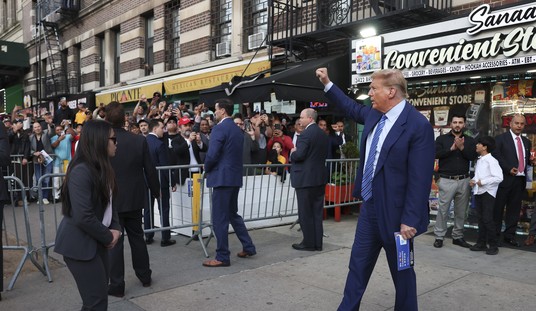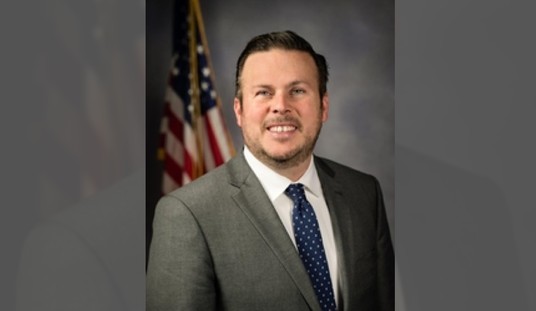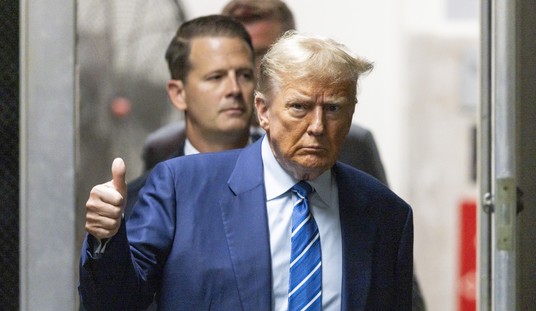https://youtube.com/watch?v=I4ypQ1Rkgd8
Editor’s Note: This is an expansion of Kyle Smith’s list of the 10 best films of the 1960s published here in June. I’ve asked Kyle to expand his series as PJ Lifestyle begins offering more lists, articles, essays, and blog posts exploring culture, art, technology, and history by decade. Earlier this month he expanded his ’80s list to a top 20 here. Do you disagree with Kyle’s choices? Do you have your own ideas for lists of movies or other cultural subjects? Which years and what subjects would you most like to see covered at PJ Lifestyle? Email: DaveSwindlePJM [@] gmail.com Also check out Kyle’s top 10 movie picks for the ‘30s, ’40s, ’50s, ‘70s, ’90s, and the ’00s before he expands them to top 20s.
20. A Man for All Seasons (1966)
Though the film’s historical accuracy is a matter of debate, an exacting and precise Paul Scofield made one of the great principled heroes in screen history as England’s Lord Chancellor Sir Thomas More, who for a time was canny enough to evade the death penalty from Henry VIII (Robert Shaw) as the king purged his kingdom of clergymen who opposed his break with the Church of Rome. More, who is both canny and devout, refuses to sign an oath declaring Henry the head of the church, but he refuses to say why he is not in violation of law. Rich with palace intrigue and legal maneuvering, the film is thrilling on both the level of personality and plot, and its historical reverberations are immense.
19. Take the Money and Run (1969)
Long before This Is Spinal Tap, Woody Allen’s pioneering comedy mockumentary about a hapless bank robber spoofed decades of movies about desperadoes with a touch of absurdist wit that set it above and apart from the sketch-comedy tradition in which Allen got his career start. Savor the bizarre abstractions of the young Allen’s imagination, like the chain gang fed one hot meal a day — “a bowl of steam” — or a pauper earning a meager living “selling meagers.”
18. The Hustler (1961)
Paul Newman’s taste for ragged, beaten-up antiheroes was already fully formed when he played Fast Eddie Felson, a headstrong young pool shark who gets properly upstaged by the calm, dogged professionalism of Minnesota Fats (Jackie Gleason, in his greatest screen performance). Few films have such a riveting scene right at the beginning — in the epic 25-hour match between the two — but with its smoky black-and-white air the entire film sustains the feel of a grit-infused, all-night battle.
https://www.youtube.com/watch?v=tN-j4GDqjv4
17. True Grit (1969)
A colorful and spirited Western from the old school was one of the biggest hits of the year just as Hollywood was turning to downbeat subjects and depressing films like Midnight Cowboy, which won the Best Picture Oscar that year. John Wayne won his Oscar playing a slightly exaggerated and comical version of his iconic screen cowboy in one of the last great traditional Westerns, which doubled as a sharp-eyed commentary about Vietnam-era hippies, legalism-loving bureaucrats and the necessity for the clarity of lawmen like Rooster Cogburn to keep order.
16. The Good, the Bad and the Ugly (1966)
Though at the time seen as a cheap, bloody genre picture, Sergio Leone’s reconceptualization of the Western as an opera — complete with self-consciously stagy elements and interludes in which the characters are overshadowed by the magnificent Ennio Morricone score — was a screen revolution that set the stage for films that were more fully appreciative of the way audiences had sussed out familiar tropes and wanted them reinvigorated by imaginative directors.
15. Who’s Afraid of Virginia Woolf? (1966)
Although the psychological cruelty of George and Martha’s cocktail party from hell makes it hard to watch, the Mike Nichols film of Edward Albee’s play is a penetrating study of a toxic marriage. As the harridan Martha, Elizabeth Taylor (who was only 33 at the time of filming) dug far deeper than was typical for actresses of the era, who were still reluctant to come across as unattractive, much less as alcoholic vipers. Albee’s dialogue is still as thorn-sharp as ever, and though the film’s once-shocking profanity today seems quaint, the characterizations remain searing.
14. Charade (1963)
A frothy romantic comedy could not hope for a more ideally matched pair of leads than Cary Grant and Audrey Hepburn, perhaps the two greatest masters of the form, who made only this one film together. Thanks to dazzling dialogue, a larky Hitchcockian plot and bewitching Paris settings, the two stars made this one count, and it’s also one of the few great movies that’s in the public domain, meaning it’s widely available.
13. Psycho (1960)
Today mixing sex and horror seems like a cliche, but back in 1960 this one hit like a thunderbolt, with Anthony Perkins’s boy-next-door-madness providing the model for many another screen murderer. Though the film’s expository sections can be a bit creaky, its greatest moments are indelible.
12. Once Upon a Time in the West (1968)
Leone outdid himself just a couple of years after The Good, the Bad and the Ugly, going even further into the operatic realm with an impossibly suspenseful tale about a mysterious, iron-willed killer (Charles Bronson) whose motivation isn’t revealed until the closing minutes of a three-hour story about his pursuit of his ruthless, blue-eyed opponent — played by Henry Fonda in the most chilling and surprising performance of his career.
11. Cool Hand Luke (1967)
Providing a bridge from 1932’s earnest message movie I Am a Fugitive from a Chain Gang to the cynical, often self-defeating and usually doomed wiseguys of 1970s cinema, Paul Newman proved that a movie-star glow could infuse even the dustiest and most dismal conditions. His Luke — a guy sentenced to hard labor for the whimsical crime of bashing the heads off parking meters — can’t resist challenging whatever system he’s up against, providing an extreme example of the principle that without freedom life isn’t worth living.
10. Bonnie and Clyde (1967)
Warren Beatty and Co’s idea to make a movie showing vicious criminals as prankish antiheroes — but nevertheless have them meet the most gruesome comeuppance ever depicted on screen to that point — yielded a provocative entertainment that also expertly marshalled the forces of irony. Are we meant to laugh with these careless bandits as banjo music plays them jauntily along to their next despicable act? Maybe, but even as we become complicit in the granting of legend status to twisted narcissists we forgive ourselves for enjoying what is, in our experience of it, only a movie. And the shocking, sudden end makes sure we don’t leave the theater smiling.
9. Two for the Road (1967)
The most obscure movie on this list starred Albert Finney and Audrey Hepburn as a feuding couple on a series of car trips in Europe. Disguised as a sweet romcom, Stanley Donen’s film was actually a tricksy pocket epic about falling in and out of love with your partner down life’s exhilarating straightaways and into the ditches. The story of the couple’s romance is broken up and told out of sequence, leaving the viewer to put the puzzle back in chronological order but also understanding the point of the fragmentation: It’s a brilliant way to illustrate the how, as couples, we carry every old argument and feud and bad mood with us. But along with the regrets there is also, always, the understanding of how we fell for each other in the first place and the hope that we’re still basically the same as ever.
8. Dr. Strangelove or: How I Learned to Stop Worrying and Love the Bomb (1964)
Unsettling and hilarious in equal measure, the movie expands from a single crazy act by a general who has gone off his rocker to the destruction of the world as we know it, with each devastating step along the way totally absurd and yet somehow grimly plausible. Satire can’t do better than pushing you both ways at once, making you laugh at the ridiculous even as you wince at the essential underlying truth.
7. 2001: A Space Odyssey (1968)
Perhaps no great film has dialogue that’s more banal, not to mention sparse: Nothing is said in the first 20 minutes or the last 20. The pace is deadly and the climactic third act baffling upon a first viewing. The actors are nondescript at best. Yet Stanley Kubrick’s special-effects breakthrough remains the standard against which serious sci-fi must be judged, for its scope and ambition and its sense of majesty at what man’s place in the universe is and what it could be.
6. The Lion in Winter (1968)
Previously an obscure 12th century monarch, Henry II will live forever thanks to James Goldman’s words and Peter O’Toole’s canny portrayal. The chess match between Henry and his estranged wife Eleanor of Aquitaine (Katharine Hepburn, whose hauteur was never more befitting), each of whom has designs on who should inherit the throne after Henry’s death, inspired perhaps the smartest script about political power dynamics ever written, and yet the film is also a strange kind of romance. These two old serpents have an affection for each other that goes beyond their respect for each other’s gamesmanship. Goldman’s dialogue — poisonously cordial, elegant in its lethality — is matched for wit in this decade perhaps only by his brother William’s script for a film that would come out the following year.
5. Lawrence of Arabia (1962)
Somewhat of a letdown in its thorny, politics-filled second half, and far more dedicated to the power of mythology than to what T.E. Lawrence himself called “a sideshow of a sideshow,” David Lean’s sweeping, painterly triumph nevertheless sets a new standard for the epic by the time Lawrence hits Suez and the film marks the end of its first half. As portrayed with blue-eyed fire by O’Toole, Lawrence is an almost supernaturally inspiring figure, a testament to the power of individual action, the noble nature of physical courage and the brutal beauty of a life in soldiering.
4. Butch Cassidy and the Sundance Kid (1969)
Going Bonnie and Clyde one better, Paul Newman and Robert Redford’s buddies made for a far tighter couple than the other bank-robbing desperadoes who ruled ’60s screens. William Goldman’s impossibly clever and funny script marked the final breach with ancient studio mandates that demanded appropriate punishment for lawbreakers and turned its pair of affable banditos into joking, harmless buddies out for nothing but a merry frolic. Goldman’s genius ending — showing the boys simply fading back into the realm of legend instead of getting shot by Bolivian troops — emphasized the fanciful feeling to the whole fictionalized adventure, one that at no point was to be taken seriously. If only everyone who tried to write a buddy movie after this had one-tenth Goldman’s way with words.
3. The Sound of Music (1965)
Director Robert Wise used a stack of Rodgers and Hammerstein classics to whip up joy bordering on delirium, in scene after scene. The opening helicopter shot in the mountains of Salzburg, the “Do-Re-Mi” montage with the children, the escape to Switzerland at the end and even throwaway light-comic numbers like “How Do You Solve a Problem Like Maria?” became indelible.
It’s true that the film is a love story, but not the way it’s ordinarily understood: the romance between the principal characters is an afterthought. Julie Andrews made the world fall in love with her.
2. The Graduate (1967)
It took a stage director, Mike Nichols, to open up the screen with new forms of visual excitement and impeccable use of pop songs to tell the story without a word of dialogue.
The film’s breathtaking “Sound of Silence/April Come She Will” montage in which Benjamin Braddock (Dustin Hoffman), newly wised up after losing his virginity, wordlessly celebrates his initiation into adulthood even as he hates himself for making a profound error, was a revolutionary sequence.The match cuts — he leaves his parents’ pool and appears to walk directly into Mrs. Robinson’s room, which is actually in a different location, then flops down on a float only to appear in bed with Mrs. R again, then back in the pool when his father speaks to him — provide some of the most delightful misdirection ever shown on screen.
http://www.youtube.com/watch?v=hvIL_A0UsJk
1. Doctor Zhivago (1965)
Taken as a roaring adventure and a heartbreaking romance at the time, Doctor Zhivago was both of those, a grand entertainment and a beautiful object. (It still stands as the eighth-biggest box office hit of all time, if you adjust for inflation.) But the story is also that of an idealistic, nonpolitical young doctor-poet who passively supports the Bolshevik revolution and is gradually forced to recognize the collectivist calamity we see not through political speeches but through its increasingly immiserating consequences.
In its depiction of the conflict between individual rights and desires on the one hand and history on the other — particularly the endlessly repeating effort by elites to impose a top-down restructuring of societal norms — it is a screen monument, and a daring one. Hollywood’s shameful see-no-evil relationship with the greatest horror story of the twentieth century — communism — has only one great exception — the film based on the Russian novel that was banned by the Evil Empire for 30 years.








Join the conversation as a VIP Member